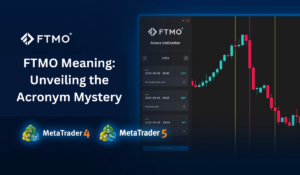Introduction
Investors seeking to generate a steady income stream from their investments often turn to dividend-yielding ETFs (Exchange-Traded Funds). These funds provide exposure to a diversified portfolio of dividend-paying stocks, offering the potential for both capital appreciation and regular dividend payments. In this article, we will explore the concept of dividend-yielding ETFs, their benefits, considerations for selecting the best ETFs, and provide a comprehensive list of the top dividend-yielding ETFs to consider for Q4 2023.
1. What are Dividend-Yielding ETFs?
1.1 Understanding Dividends
Dividends are a portion of a company’s profits distributed to its shareholders as a reward for owning the stock. Dividend-yielding ETFs are investment funds that hold a diversified portfolio of dividend-paying stocks. These ETFs aim to provide investors with exposure to companies that consistently distribute a portion of their earnings as dividends.
Investing in dividend-yielding ETFs offers several advantages, including:
- Regular Income Stream: Dividend payments from the underlying stocks provide investors with a consistent income stream. This can be particularly attractive for income-oriented investors, such as retirees, seeking reliable cash flow.
- Potential for Capital Appreciation: Dividend-yielding ETFs not only offer income through dividends but also provide the opportunity for capital appreciation as the prices of the underlying stocks increase over time.
- Diversification: ETFs typically hold a basket of dividend-paying stocks across various sectors and industries. This diversification helps reduce individual stock risk and provides exposure to a broader market.
When selecting dividend-yielding ETFs, it’s essential to consider the following factors:
- Dividend Yield: Evaluate the historical dividend yield of the ETF to understand the income potential. Dividend yield is calculated by dividing the annual dividend payment by the ETF’s current price.
- Dividend Growth: Look for ETFs with a track record of consistent dividend growth. Companies that consistently increase their dividends over time may indicate strong financial health and management confidence.
- Expense Ratio: Consider the expense ratio, which represents the annual fees charged by the ETF. Lower expense ratios can have a positive impact on overall returns.
- Underlying Holdings: Review the composition of the ETF’s portfolio to ensure it aligns with your investment goals and risk tolerance. Assess factors such as sector allocation, geographic exposure, and company size.
2. Top Dividend-Yielding ETFs for Q4 2023
2.1 Dividend Aristocrats ETFs
Dividend Aristocrats ETFs consist of companies with a history of increasing dividends for a minimum number of consecutive years (e.g., 25 years). These ETFs focus on stable, high-quality companies that have demonstrated their ability to sustain and grow dividend payments. Examples of Dividend Aristocrats ETFs include SPDR S&P Dividend ETF (SDY) and ProShares S&P 500 Dividend Aristocrats ETF (NOBL).
2.2 High Dividend Yield ETFs
High Dividend Yield ETFs prioritize companies with above-average dividend yields. These ETFs may include stocks from various sectors and industries, offering a higher income potential. Examples of High Dividend Yield ETFs include iShares Select Dividend ETF (DVY) and Vanguard High Dividend Yield ETF (VYM).
2.3 Dividend Growth ETFs
Dividend Growth ETFs focus on companies that have a history of increasing dividends over time. These ETFs aim to capture both income and potential capital appreciation. Examples of Dividend Growth ETFs include Vanguard Dividend Appreciation ETF (VIG) and Schwab U.S. Dividend Equity ETF (SCHD).
2.4 Sector-Specific Dividend ETFs
Sector-Specific Dividend ETFs focus on dividend-paying stocks within specific sectors or industries. These ETFs provide targeted exposure to sectors known for their dividend stability and growth potential. Examples of Sector-Specific Dividend ETFs include iSharesSelect Dividend ETF (DVY) for the utilities sector and Global X SuperDividend REIT ETF (SRET) for the real estate sector.
3. Common Queries about Dividend-Yielding ETFs
3.1 How are Dividends Paid in ETFs?
Dividends paid by ETFs are typically distributed to shareholders on a periodic basis, such as quarterly or annually. The ETF collects the dividends from the underlying stocks held in its portfolio and distributes them to investors proportionally based on their ownership of the ETF shares. Investors can receive dividends in the form of cash deposited into their brokerage account or reinvested back into the ETF through a dividend reinvestment plan (DRIP).
3.2 What is Dividend Yield?
Dividend yield is a financial ratio that represents the annual dividend income generated by an investment relative to its current price. It is calculated by dividing the annual dividend per share by the stock or ETF’s current price and expressing the result as a percentage. Dividend yield provides investors with a measure of the income potential of an investment, allowing for comparisons between different dividend-paying stocks or ETFs.
3.3 Are Dividend-Yielding ETFs Suitable for Income Investors?
Dividend-yielding ETFs can be suitable for income-oriented investors looking to generate regular cash flow from their investments. These ETFs provide exposure to a diversified portfolio of dividend-paying stocks, offering the potential for both income and capital appreciation. However, it’s important to consider that dividend payments are not guaranteed, and there is always the risk of a company reducing or eliminating its dividends. Investors should assess their risk tolerance, investment goals, and conduct thorough research before investing in dividend-yielding ETFs.
4. Key Takeaways
- Dividend-yielding ETFs can be an attractive investment option for investors seeking a regular income stream and potential capital appreciation.
- When selecting dividend-yielding ETFs, consider factors such as dividend yield, dividend growth, expense ratio, and portfolio composition.
- Dividend Aristocrats ETFs, High Dividend Yield ETFs, Dividend Growth ETFs, and Sector-Specific Dividend ETFs are popular options for investors interested in dividend-yielding ETFs.
- Dividends in ETFs are typically paid out to shareholders on a periodic basis and can be received as cash or reinvested through a dividend reinvestment plan.
- Dividend yield is a ratio that represents the annual dividend income generated by an investment relative to its current price.
- Dividend-yielding ETFs can be suitable for income investors, but it’s important to assess individual circumstances and conduct thorough research before investing.
In conclusion, dividend-yielding ETFs offer investors the potential for income and capital appreciation. By considering the factors mentioned and exploring the various types of dividend-yielding ETFs available, investors can make informed decisions to suit their investment objectives. As with any investment, it’s crucial to conduct thorough research, diversify investments, and monitor the performance of the chosen dividend-yielding ETFs over time.








